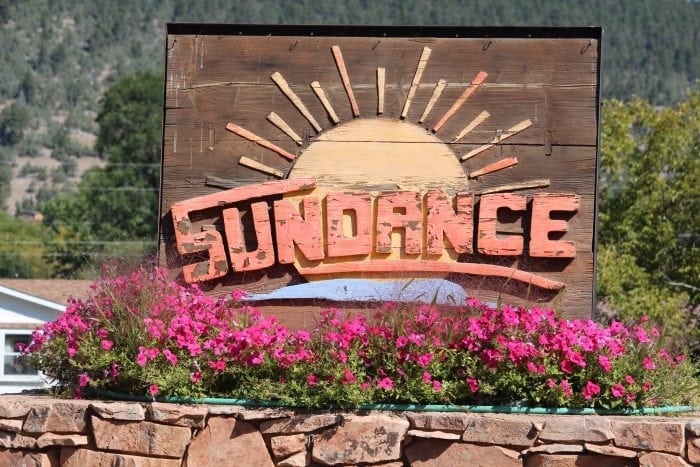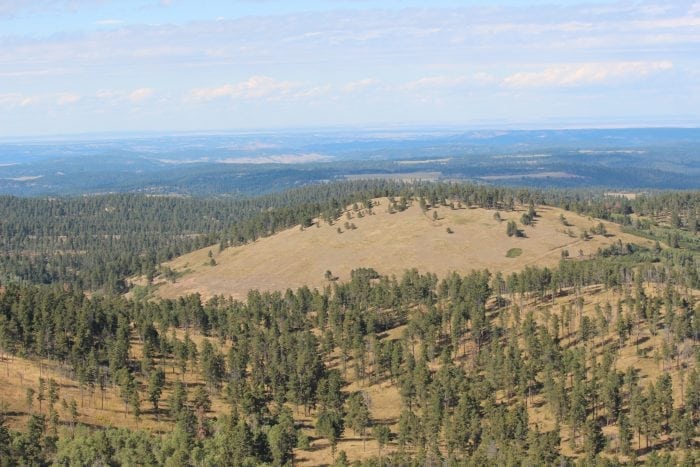
Minnesota. Arizona. Wyoming. These are but a few states where public lands exchanges have been carried out recently by hard rock mining developers to acquire subsurface mineral rights and secure sites for waste tailings disposal on public lands like those managed by the US Forest Service or Bureau of Land Management for multiple use livelihoods and recreational amenities.
The equation is simple: find a state section or privately-held parcel of equal economic value (though size may vary to reach monetary equivalency based on, for instance, animal unit months of cattle grazing or thousands of board feet of timber production) to swap for the public land needed for extractive mineral development. This, of course, assumes that subsurface mineral rights or a permit to dump overburden or mine waste weren’t granted from the public domain with an existing claim or lease on the land, which a mining corporation would necessarily have prior to the need for additional land. Often times these additional lands were difficult to gain access to at the time original rights were acquired due to cultural features and historical artifacts, locally significant recreational uses, and/or unique ecological diversity that could be impaired or displaced by extraction.
Given that the potential for cultural, recreational, and ecological values varies by place, so too does the value of land for resource production like with timber and grazing, where access and levels of productivity differ. No parcel is the same. Instead, each is a unique combination of socio-cultural, ecological, and economic values amid a patchwork tapestry of agencies and managers, inholdings and historic claims, watersheds and local climates, species’ ranges and habitats, and geologic lodes and formations.
Much of the land owned by the Forest Service upon its creation in the early 1900s was sketched around the borders of frontier mining claims, railway rights-of-way, and homesteads. These non-contiguous holdings that resulted have added to management complexity, notably for conservation of species with large ranges that have become fragmented and for protection of source watersheds where private land use may not be subject to the same water quality regulations, and increasingly with pine bark beetle and wildland fire that have proven difficult to eradicate and extinguish when private inholdings limit response efforts.
Exchanges are a resurgent phenomenon shaping public lands composition and use in the United States but result in a much different outcome than what was originally intended for the exchange process. The Weeks Act of 1911 authorized the federal government to “examine, locate and recommend for purchase … such lands within the watersheds of navigable streams as … may be necessary to the regulation of flow of navigable streams…” That is, purchases and exchanges of private land inholdings were justified on the basis of protecting source watersheds in national forest lands.

Credit: Jeffrey Jenkins
While the U.S. Forest Service still uses the act to acquire lands for conservation, this is not necessarily the case for state governments operating under their own rules of exchange, many of which have prioritized extractive industrial development rather than resource conservation as the raison d’être of the state exchange process. This down-scaling of governance leverages rural desires for economic development and in the process decentralizes regulatory oversight. These state land exchanges are thus an actually existing case of local neoliberalism where state laws have been rolled out within existing political-legal structures to facilitate private development. The state serves the market but at the expense of the collective forest community.
The exchange process and the larger discussion of hard rock mining as “the highest and best use of the land” (according to the General Mining Law of 1872) facilitated by state or federal government that redistributes property to extractive developers can be understood through Garrett Hardin’s Tragedy of the Commons. Essentially one land use: the hard rock mine rises above the rest of the otherwise equal access multiple use livelihoods and recreational amenities of the forest community (e.g. timber, grazing, hunting, off-road vehicles). The mine, unlike the other land uses that have a sustainable yield of extraction or use relative to the collective resource base of the forest (yes, even including harvest levels based on species population set for recreational hunting and miles of access roads that limit ORV erosion impacts), has the potential to displace or curtail these other multiple uses. In time, the hard rock mine will undermine its own conditions for accumulation of capital, what James O’Connor refers to as the Second Contradiction of Capitalism.

Credit: Jeffrey Jenkins
The production level of a given land use in the forest community is based on a sustainable level of extraction or use that won’t impair its own ability nor that of its neighbors to accumulate capital, while hard rock mining has a finite resource base and instead will accumulate until the subsurface resource is economically depleted, thereby ending its production and often (unless a reclamation bond is issued), its ability to cover the cost of cleanup, thereby impacting the forest and the other values contained in perpetuity. And in trying to extend the period of economic return from a mine throughout its lifecycle the social and ecological costs of extractive development become externalized or displaced. Impacted headwaters emanating from a mine’s waste tailings and those who may be affected downstream are often cast as those incurring the traditionally externalized cost of ecosystem degradation and human health impacts. But what’s more is that externalized costs also include the displacement of locally significant land uses and ecological diversity downgradient and at the site of extraction itself.
As the case with the Rare Element Resources’ Bearlodge Project in the Black Hills of Wyoming shows, land exchanges have the potential to displace those in the forest community from the surface resources they rely on for production and recreation, and differences in the socio-cultural and ecological value systems that are unique to each collection of parcels can greatly differ in non-market domains such as ecological value (e.g. plant diversity and habitat quality in core versus periphery landscapes) or social value (e.g. the utility of the land for big game hunting as a locally significant cultural practice). Of course, exchange value and use value are two separate constructs, however a more comprehensive framework for land exchanges is still needed that leverages non-market valuation techniques and accounts for the displacement of impacts to other types of value. While socio-cultural, ecological, and economic value types (e.g. hunting zones and quotas; plant diversity and habitat quality; market value of the property) and the disciplines used to construct them are by definition incommensurable, incommensurables are in practice rendered exchangeable through economic fiat.

Credit: Jeffrey Jenkins
In order to avoid overexploitation of geological, ecological, and recreational resource bases, we must move away from the prevailing common denominator of monetary currency (e.g. payments for ecosystem services) and instead develop more nuanced and adaptable systems of exchange that take into account material and geographic specificity for a context-driven assessment and reconciliation of otherwise incommensurable units. Only when these incommensurable domains are rendered exchangeable through a recognition of their own incomparability will a rational system of exchange with multiple value types emerge that, in the words of both the philosopher Bentham and the first forest chief Pinchot, does “the greatest good for the great number of people.”
These findings are described in the article entitled Incommensurable or inexorable?: Comparing the economic, ecological, and social values of exchanged multiple use lands, recently published in the journal Applied Geography. This work was conducted by Jeffrey Jenkins from the University of California, Merced.









